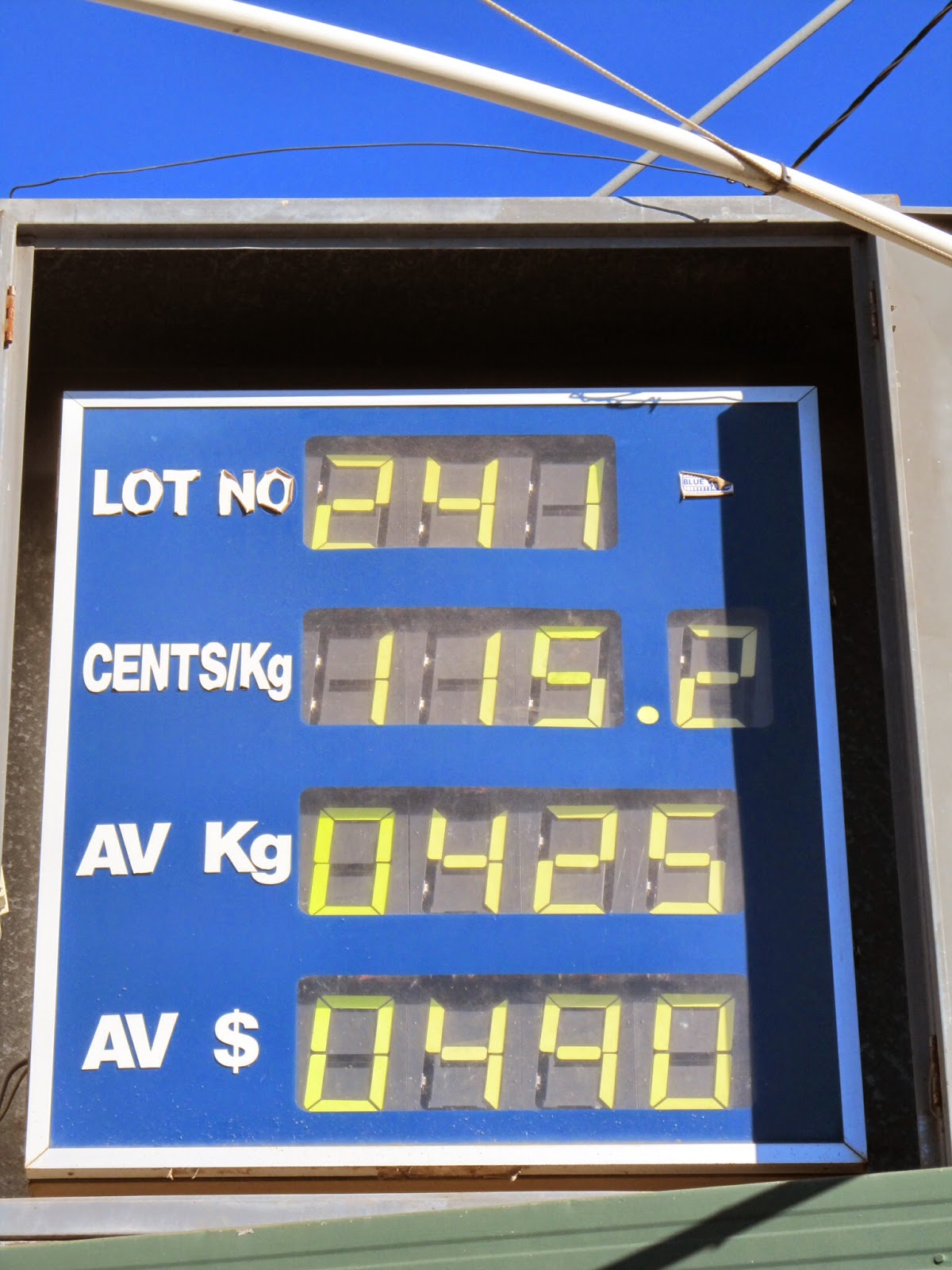May 21st
Our day started at 7:30am when we left for the Dalby Sale barn. Every Wednesday there is a sale from 7:00am to 4:00pm selling all types of cattle from Brahman to Angus to Herefords to crosses of all sorts of breeds. It was a spectacular maze of pens and alleyways with cattle running here and there, looking confusing to us but flowing in perfect order for the cattlemen and women working there. Every sale, 4,000 cattle are run through, with 230,000 cattle sold each year. Some things that differ from the US is that instead of the cattle coming to the buyers, the buyers go to the pens. The price is set in cents per kilogram rather than our units of dollars per pound. The animals are also not weighed before they are sold so the buyers don't know the weight before they are bought.
 |
| Auctioneer selling pen of cattle |
 |
| groups of Hereford cattle to be sold |
 |
| sale information |
At 11:00 am, after the sale barn tour, we continued on to the Sandalwood Feedlot. 12,000 head of cattle currently reside there, but as many as 15,000 to 16,000 were there last month. The feedlot itself can hold 18,000 head of cattle at one time. This feedlot is a custom feeder, which means they take the producer's cattle and fatten them to a certain weight determined by the owner. The owner can then take the cattle and sell them where they desire. The price to custom feed the cattle is $5 per head per day. Other expenses such as sick treatment, is not included. There were many different types of cattle there such as the Waygu, or Japanese cow, which is a cattle breed known for its high marbling. Everyday, staff ride on horses through the pens checking for sick or injured cattle. Their death loss is less than 1%, compared to Australia's average of 2%.
 |
| JBS sign |
Next we toured the meat packing plant which slaughters around 1,100 cattle a day with 70 head per hour. We saw the whole process from slaughter to packaging. This plant only slaughters grass fed beef steers. They export meat to 38 different countries with most of it going to Japan. Only about 2% of the meat stays in Australia for domestic consumption. JBS has 1,000 employees between the feedlot and packaging plant but with 850 of them working in the packaging plant.
Our day ended by returning to Toowoomba for supper and our last night staying in this town. Our time is winding down here in Australia, which is hard to believe since it seems like we only just arrived, but we are getting excited to return home.
 |
| pens in a new facility |
No comments:
Post a Comment